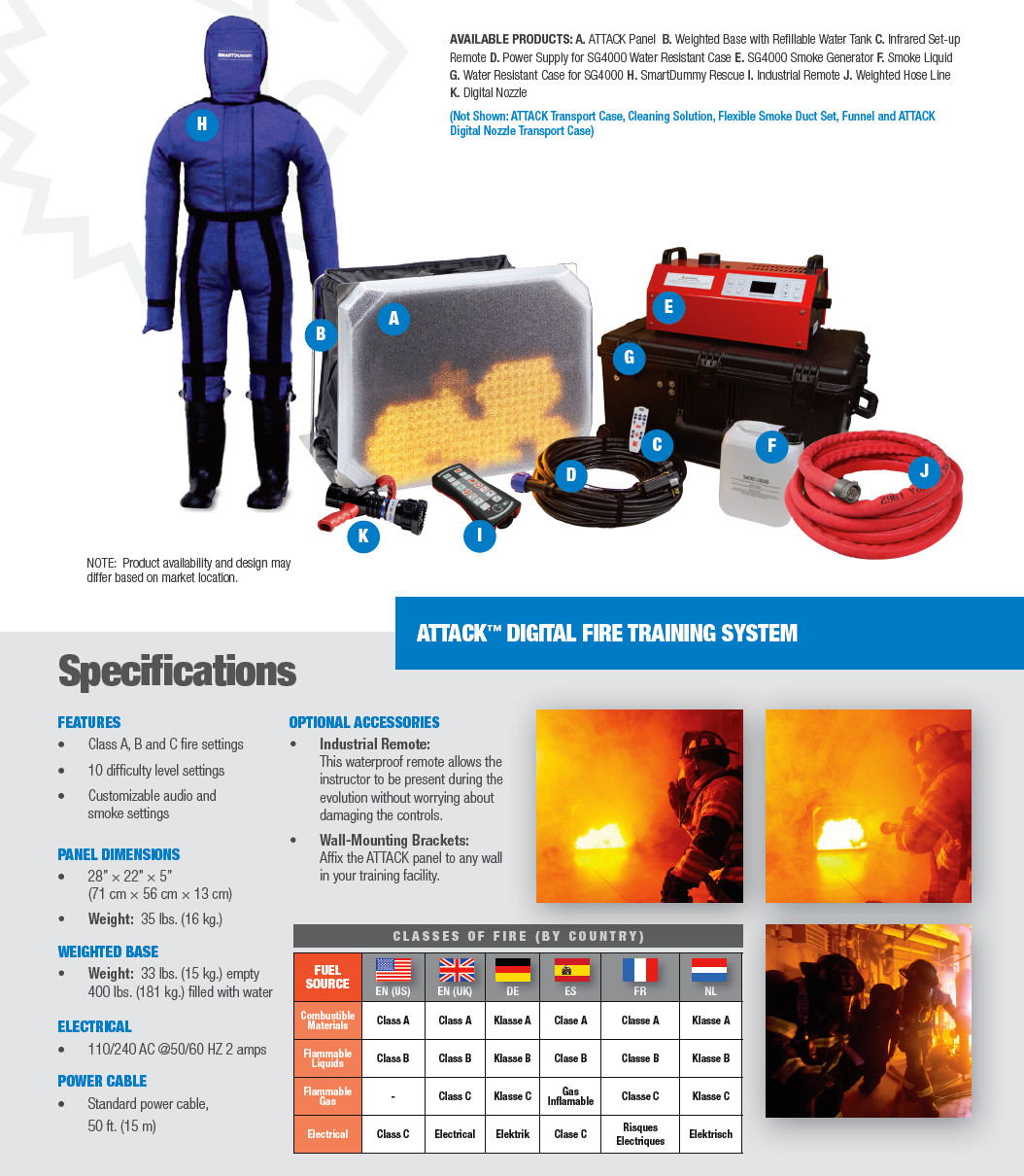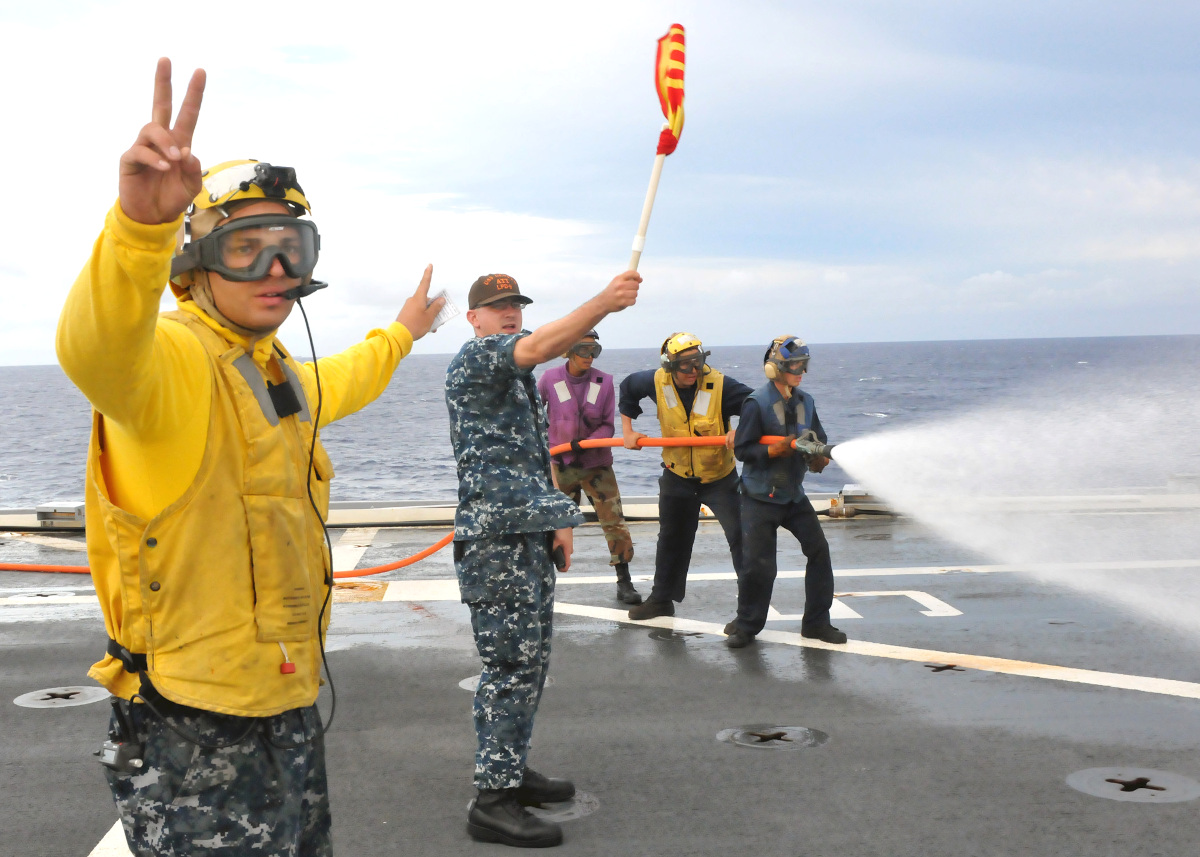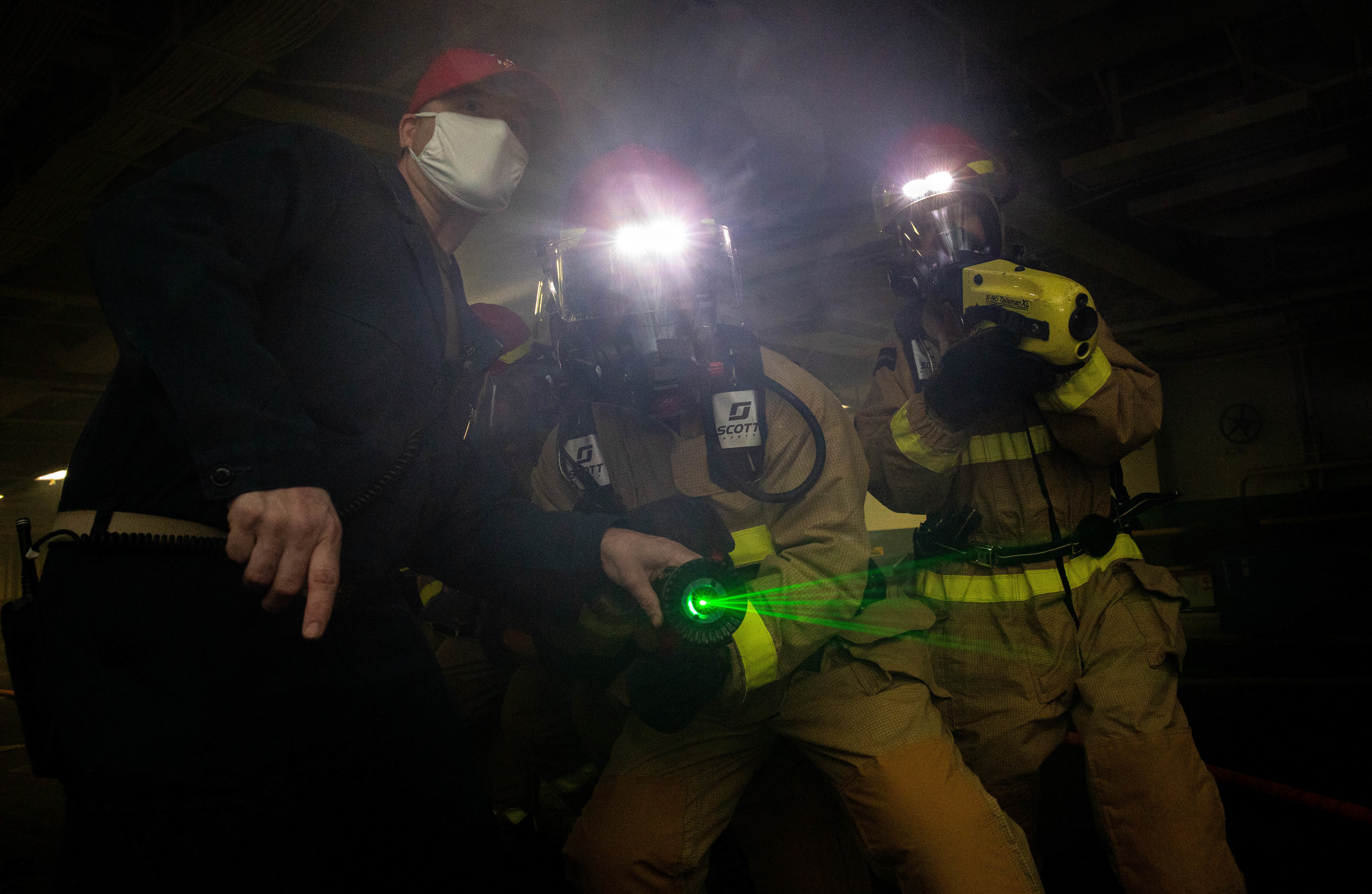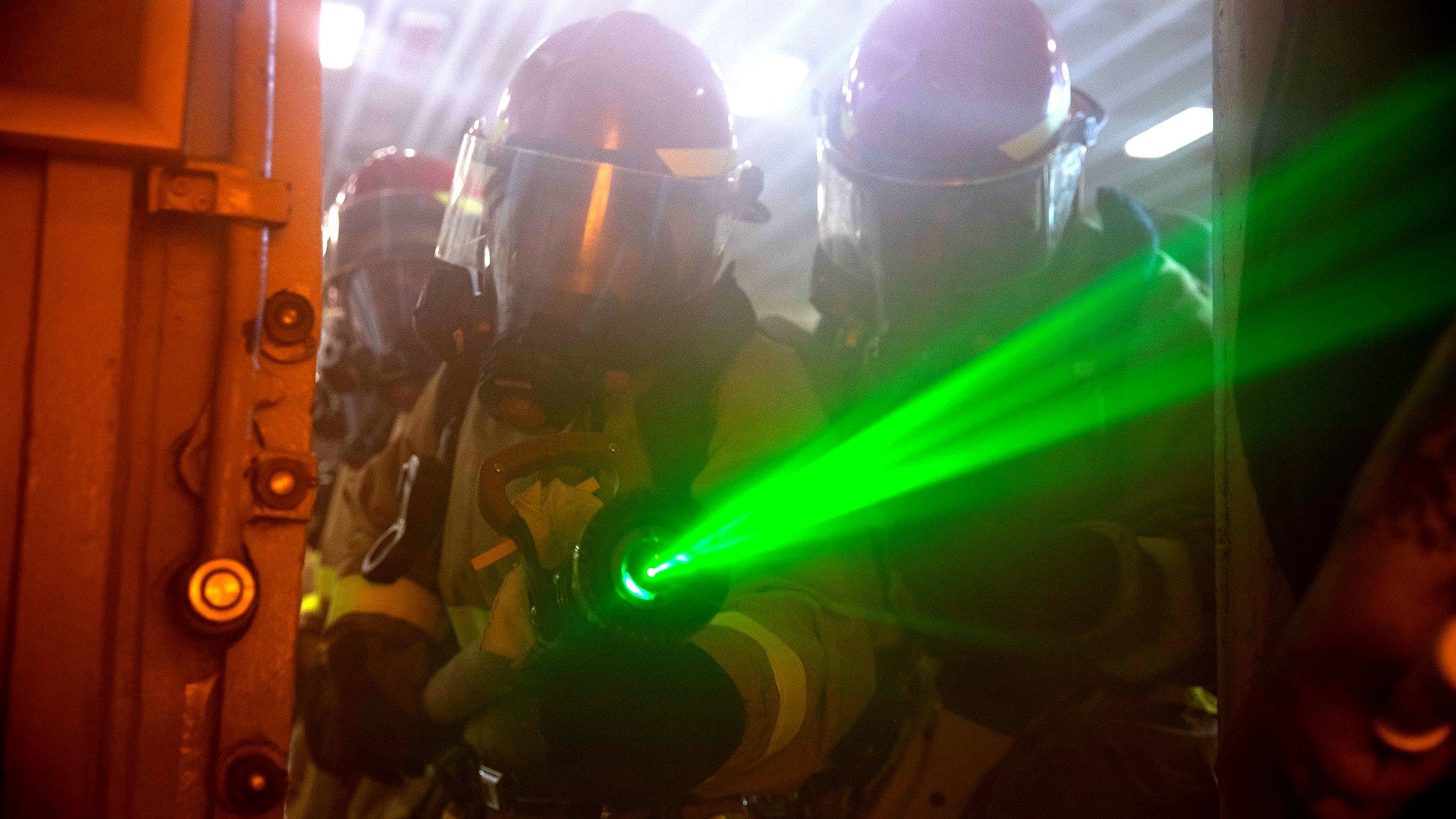Fires are no laughing matter, especially on ships and submarines, where various factors can make them spread rapidly and be very difficult to extinguish. The U.S. Navy is acutely aware of this reality after having had to scrap the former Wasp class amphibious assault ship USS Bonhomme Richard
following a massive blaze that raged on the ship for days last year, which the service has now accused a sailor of deliberate starting. So, it’s not surprising to see sailors conducting a firefighting drill on Bonhomme Richard‘s sister ship USS Bataan, but it is unexpected to see a laser beam coming out of the end of the hose rather than a stream of water.
The Navy released this picture on Aug. 11, 2021, which shows three sailors in full firefighting gear taking part in a drill in Bataan‘s main hangar bay the day before. The ship is currently at its homeport at Naval Station Norfolk in Virginia. However, this isn’t about some new, sci-fi way of fighting fires. Rather than a real fire hose, the trio appears to be using the Attack digital fire training system from a company called Lion Group.

The part of the Attack system we can see is the digital nozzle, which consists of a green laser built into a standard fire hose nozzle that can still be used to shoot water, as well. The laser beam is projected in a way that mimics the spread of an actual cone of water coming out of a hose.
This nozzle can be attached to a weighted faux fire hose that simulates a real one full of rushing water. It also has a speaker that pumps out the noise you’d heard when using a real nozzle shooting water for added realism. The nozzle and hose are just two parts of the complete Attack system, which also includes panels that show fake flames and smoke generators, among other things.

“The nozzle emits infrared light and lasers that interact with the Attacks’s self-generating digital flames just as a water-based hose line interacts with a live fire,” according to Lion’s website. “When using the Digital Nozzle while the Attack is in laser mode, the fire will only be knocked down if the trainee uses proper hose line technique.”
All of this enables the Attack system to be set up virtually anywhere and be used without having to douse anything in real water. This sounds like it would be particularly useful for training inside Navy ships, which are full of unusually shaped and often cramped spaces, and where it might be impossible to safely use actual water during firefighting drills for fear of damaging key systems. One would imagine that Attack is not a complete substitute for training with actual fire hoses spewing water, but that wouldn’t diminish the value of being able to practice fighting fires in areas of a ship that might otherwise be only accessible to less immersive firefighting training in the past.

The Bonhomme Richard incident also prompted the Navy to increase the requirements for routine firefighting training on ships, among other things. A system like Attack, which can be set up relatively quickly regardless of the exact scenario, could simply make it easier to run through these drills, but still do in a way that is highly beneficial to sailors.
It’s interesting to note that this is far from the first time the U.S. military, among others, has used lasers for simulated training. Since the late 1970s, American troops have “fought” each other in exercises using various iterations of the Multiple Integrated Laser Engagement System (MILES) system, which uses lasers to simulate the effects of small arms and other weapons.
Now, this technology has evolved and migrated to help American sailors practice fighting an entirely different kind of battle—one against flames aboard warships.

Contact the author: joe@thedrive.com
